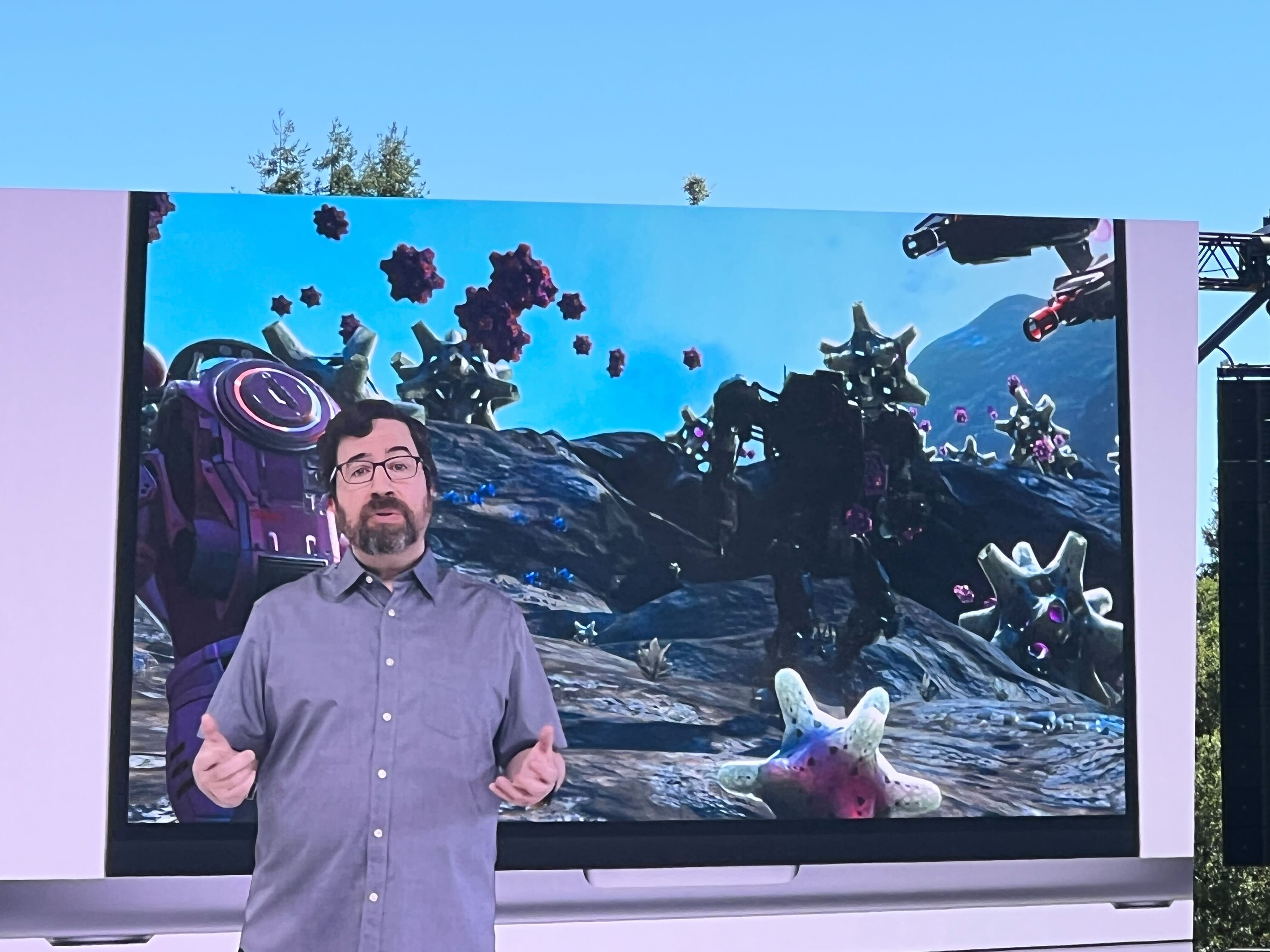Look out Nvidia: Apple is coming for you with MetalFX Upscaling
Opinion: Apple takes on Nvidia’s DLSS at WWDC 2022

Apple revealed a host of new products and tools at its WWDC 2022 event, including the new MacBook Air (M2, 2022) and iOS 16, but for me, it was the reveal of MetalFX Upscaling that really got me excited – and should worry Nvidia and AMD.
At the event, it was described as “a temporal reconstruction system” that renders a game at a lower resolution, then uses machine learning to upscale the game to a higher resolution. This helps reduce the pressure on GPU when playing graphically-intensive games, and when done well, can boost performance with minimal impact on graphical fidelity.
If that sounds awfully familiar, then you’re probably thinking of Nvidia’s DLSS (Deep Learning Super Sampling) or AMD FidelityFX Super Resolution, which essentially do the same things.
I’ve tried various games using both those implementations, and I can safely say they are some of the best features to come to PC gaming in recent years. They allow people with older or budget cards to experience previously taxing graphical effects like ray tracing, and have even helped me play modern games at ridiculous 8K resolutions.

Are gaming MacBooks a possibility?
So, when Apple announced MetalFX Upscaling as I sat beneath the sweltering California sun, I got incredibly excited. The possibilities are fascinating, as it could make the best MacBooks and Macs formidable gaming devices, even if a dedicated gaming MacBook may just be wishful thinking. The best Mac games include some graphically-taxing titles like Dying Light, and MetalFX Upscaling can make those games run even better.
Apple’s success with its M1 (and now M2) chips, which combine CPU and GPU with unified memory, has been a joy to watch for silicon geeks like myself, and many of us wondered how possible it would be to harness the power of those chips – especially with the powerful M1 Pro, M1 Max and M1 Ultra variants – to play games.
Unfortunately, at the moment despite the raw power of the chips, graphically-intensive games underperform. This is likely because the majority of games aren’t configured to make the most out of the M1/M2 chips, nor work particularly well with Apple’s Metal graphics API.
MetalFX Upscaling could change that, allowing games to far better run on Apple silicon and with Metal 3. The upscaling part of the tech should boost performance further, and No Man’s Sky and Resident Evil Village will be some of the first titles to support it – with hopefully more to come.
The thought of playing stunning games on a thin and light (and silent) MacBook Air is incredibly exciting, while a specced-out MacBook Pro 16-inch (2021) or MacBook Pro 14-inch (2021) could turn into incredible gaming laptops, especially if games could make use of the high refresh rates of their ProMotion displays.
Nvidia and AMD may start feeling the heat if MacBooks running Apple hardware become viable – and desirable – gaming devices. Thanks to the unified memory of the M1 and M2 family of chips, some configurations could allow for headline specs (and performance) that Nvidia and AMD currently don’t offer with their mobile gaming GPUs.
While MetalFX Upscaling was announced at the same event as the new, more powerful M2 chip, I’ve since heard that the feature won’t be exclusive to the new generation of chips, so you won’t need to wait until future MacBook Pros to take advantage of it if you have last year’s models.
Rumors were swirling before the event that Apple would be making some exciting gaming announcements, and while the annual conspiracy that the company was going to buy EA didn't materialize (yet?), I truly believe MetalFX Upscaling is even more exciting, and I can’t wait to see what it means for gaming on Mac.
Sign up for breaking news, reviews, opinion, top tech deals, and more.

Matt is TechRadar's Managing Editor for Core Tech, looking after computing and mobile technology. Having written for a number of publications such as PC Plus, PC Format, T3 and Linux Format, there's no aspect of technology that Matt isn't passionate about, especially computing and PC gaming. He’s personally reviewed and used most of the laptops in our best laptops guide - and since joining TechRadar in 2014, he's reviewed over 250 laptops and computing accessories personally.